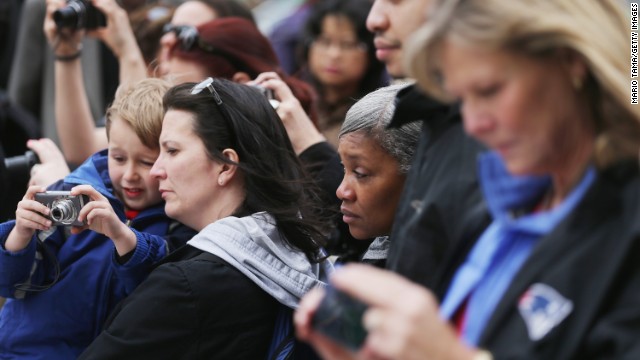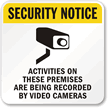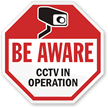Boston bombing: surprising technologies that stop and track terror
In less than a week, the Boston bombers have been identified, tracked down, and arrested. Surveillance camera footage was key in doing so. The surviving suspect was apprehended in a collaborative effort; law authorities asked the public for photos of the marathon and released photos of suspects to them. Social media helped people quickly share images and information, making it difficult for the two young men to hide.

People clicking photos at a memorial for Boston marathon victims. (Image via CNN)
CNN reports, “The Boston Marathon bombing investigation made use of crowdsourcing to collect photos and video from cell phones and surveillance cameras at an unprecedented level. These pictures were made public a little more than 72 hours after the explosions and the second suspect was arrested 29 hours later.”
Retracing the footsteps of the Boston bombing suspects digitally was another key tool in apprehending the suspects. NBC reports, “The same Internet that makes it easy for terrorists and killers to research targets and stock up on ammunition also makes it easier for them to get caught quickly, thanks to ‘digital breadcrumbs’ that are hard to erase.”
Mark Rasch, former head of the Justice Department’s computer crime unit and now an independent consultant at MarkDRasch.com, said, “The first place you find digital breadcrumbs is in deleted or cached files.”
It wasn’t just digital forensics that helped locate the suspects fast. Fox News reports, “Today in the U.S., there are several software programs regularly used by police agencies for geographic profiling, including Rigel, CrimeStat and Dragnet. They identify the most likely “anchor points” of a criminal — such as their home or girlfriend’s apartment — a technique that could also be applied to locate those points for a terrorist organization with numerous cells or the release of a biological weapon.”
New techniques for foiling terrorists continue to emerge. Besides sniffer dogs, honeybees can and have been trained in minutes to detect a wide range of explosive compounds. (Source: Homeland Security News Wire)
More sophisticated techniques include fluorescence quenching. When a nitrated molecule settles down next to a detector compound, “electromagnetic resonances bleed energy out of the detector, reducing (or quenching) the fluorescence.” (Source: IEEE Spectrum)
Advanced optical technologies like laser infrared spectroscopy, search for “characteristic absorption patterns” of explosives. Photodissociation/laser-induced fluorescence emits a distinctive fluorescent signature to signal the presence of bombs. It helps to look for solid traces of explosive, especially those transferred to the bomb-makers hands, clothing, and then left on backpack straps, vehicle panels, door-handles, windows, railings, or walls.
These tools enable intelligence officials to react more and more quickly to possible terrorist threats. As Columbia University School of International and Public Affairs adjunct professor Abraham Wagner says: “police and intelligence work have uncovered about 45 plots since September 2001, and may have discouraged a number of others.”
Category: Trespassing

















